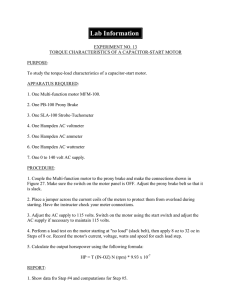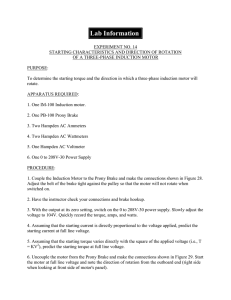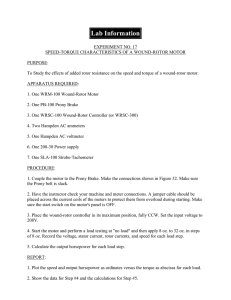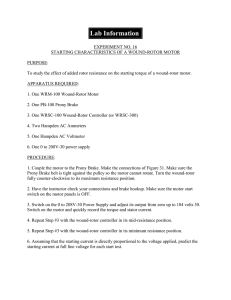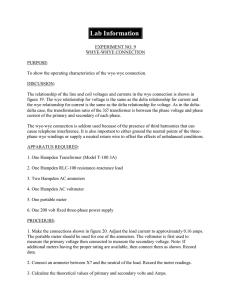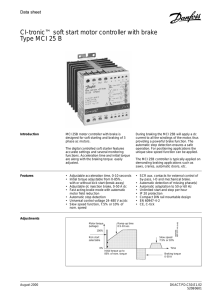Lab Information
advertisement
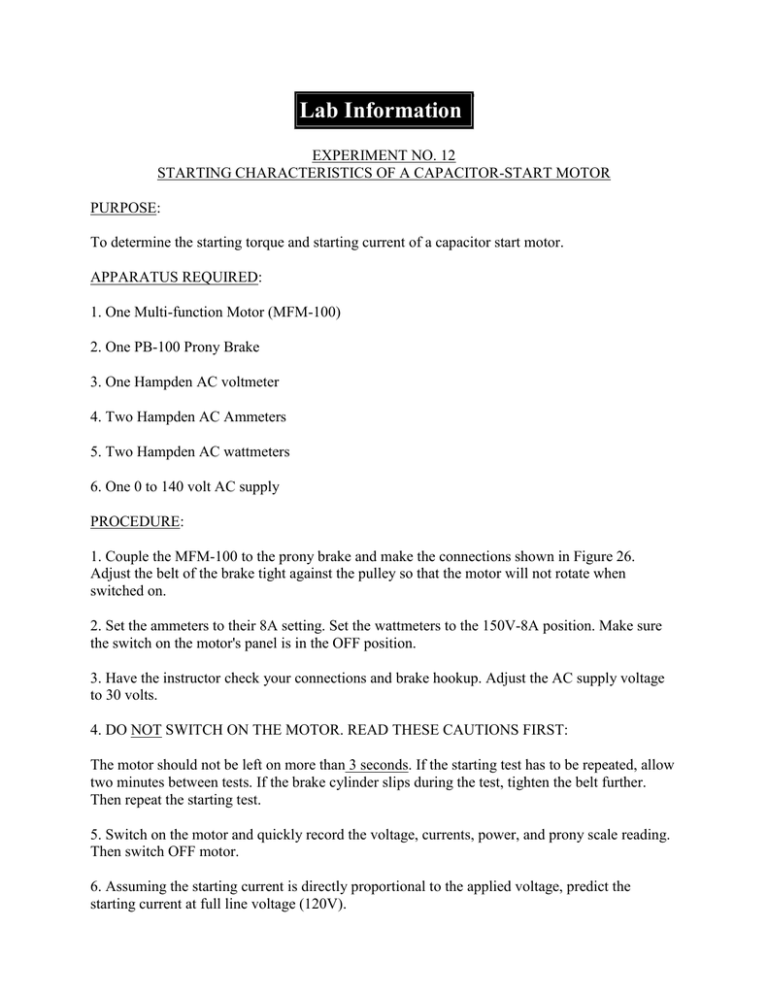
Lab Information EXPERIMENT NO. 12 STARTING CHARACTERISTICS OF A CAPACITOR-START MOTOR PURPOSE: To determine the starting torque and starting current of a capacitor start motor. APPARATUS REQUIRED: 1. One Multi-function Motor (MFM-100) 2. One PB-100 Prony Brake 3. One Hampden AC voltmeter 4. Two Hampden AC Ammeters 5. Two Hampden AC wattmeters 6. One 0 to 140 volt AC supply PROCEDURE: 1. Couple the MFM-100 to the prony brake and make the connections shown in Figure 26. Adjust the belt of the brake tight against the pulley so that the motor will not rotate when switched on. 2. Set the ammeters to their 8A setting. Set the wattmeters to the 150V-8A position. Make sure the switch on the motor's panel is in the OFF position. 3. Have the instructor check your connections and brake hookup. Adjust the AC supply voltage to 30 volts. 4. DO NOT SWITCH ON THE MOTOR. READ THESE CAUTIONS FIRST: The motor should not be left on more than 3 seconds. If the starting test has to be repeated, allow two minutes between tests. If the brake cylinder slips during the test, tighten the belt further. Then repeat the starting test. 5. Switch on the motor and quickly record the voltage, currents, power, and prony scale reading. Then switch OFF motor. 6. Assuming the starting current is directly proportional to the applied voltage, predict the starting current at full line voltage (120V). 7. Assuming the starting torque varies directly with the square of the applied voltage (i.e., T = KV2), predict the starting torque at full line voltage. The torque is obtained by multiplying the prony scale reading by ½ the length of the prony brake arm. REPORT: 1. Show data obtained and computations requested. 2. Draw a phasor diagram showing the live volts and amps, the starting winding amps, and the running winding amps. FIGURE 26 NOTE: ONE AMMETER WILL HAVE TO BE USED TWICE SINCE ONLY TWO AMMETERS ARE AVAILABLE.
